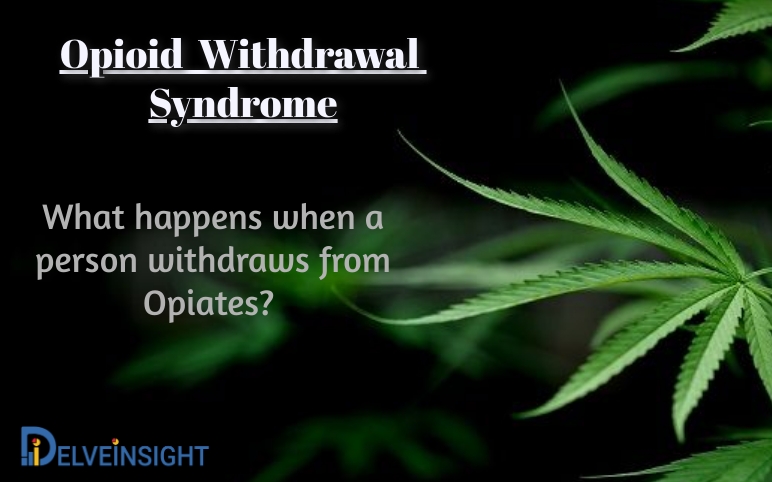Every time an opioid therapy is in the option for any patient to overcome the pain due to some chronic ailment, the risk of opioid abuse, misuse, or dependence always lingers at the back of mind. After termination of the opioids, the patient finds it difficult to stop the use of drugs and begins to crave for it. The condition of the patient after the termination of the use of opioid drugs and the phase the patient experiences is referred to as Opioid Withdrawal syndrome (OWS).
The patients going through Opioid withdrawal syndrome often have symptoms that may vary, however, are similar in one way or other, such as anxiety, yawning, sweating, eyes tearing, goosebumps, runny nose, hot/cold flashes, nausea, vomiting, diarrhea, restlessness, muscle and bone pain, and so on. Patients taking prescribed opioid drugs are monitored for aberrant behavioural changes, assessed on their risk levels and prescribed a therapy to cope with the withdrawal.
The half-life of the opioid, duration of the opioid dosage, and the condition for which the patient was being administered the opioid are some factors that define the severity of OWS the patient will go through.
At present, the approaches to treat the condition present in opioid withdrawal syndrome treatment market are gradual cessation of an opioid agonist (methadone); Short-term use of a partial mu-opioid agonist (buprenorphine) and detoxification using opioid antagonists (naltrexone and naloxone). Other off-label treatment includes the use of clonidine, which is used extensively to reduce blood pressure in OWS.
The present Opioid withdrawal syndrome has several unmet needs like the absence of effective therapy and addressing psychological symptoms. Recently, the approval of non-opioid lofexidine hydrochloride (Lucemyra) has advanced the growth of Opioid withdrawal syndrome market in the forecasted period (2020‒2030).
Further therapies in the Opioid Withdrawal syndrome pipeline that will address the present issues with the therapies and provide relief to the ones living with withdrawal are:
Therapy – APH-1501
Company – Aphios Pharmaceutical
Condition – Addiction, Opioid Dependence, Opioid Withdrawal
Clinical trial- Phase IIa – Yet to initiate
MoA – CBD encapsulated in biodegradable polymer nanospheres
RoA – Oral
Controlled substance class – Schedule I
Therapy – BXCL501
Company – BioXcel Therapeutics
Condition – Opioid withdrawal
Clinical trial – Yet to initiate
MoA – Dexmedetomidine
RoA – Intravenous
Controlled substance class – Not a controlled substance
Therapy – CHF6563
Company – Chiesi Farmaceutici S.p.A.
Condition – Neonatal Opioid Withdrawal Syndrome
Clinical trial – Phase II
MoA – Not defined
RoA – Oral
Controlled substance class – Not defined
The Opioid withdrawal syndrome market is going to leap forward attributed to the enhancement and strengthening of weak clinical Opioid withdrawal syndrome pipeline. Key pharma players such as Chiesi Farmaceutici, BioXcel Therapeutics, Aphios Pharmaceutical and others are going to advance the OWS therapy market further in future.



